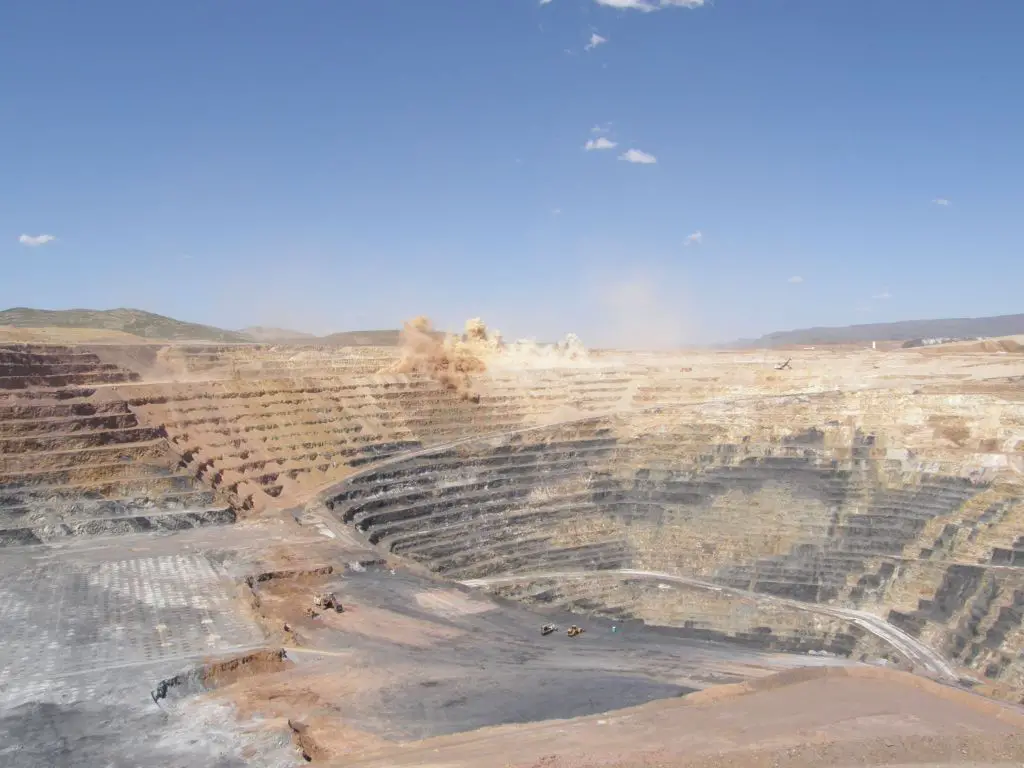Is Clay Made Out Of Rocks?
What is Clay?
Clay is a type of fine-grained natural soil material containing mostly clay minerals (hydrous aluminum phyllosilicates). It is plastic when wet and hardens when heated, making it excellent for shaping pottery and ceramics. The small size of clay particles gives it a high specific surface area which contributes to its plasticity, hardness, shrinkage and water retention properties.
Clays develop plasticity when wet, due to a molecular film of water surrounding the clay particles, but become hard, brittle and non–plastic upon drying or firing. Most pure clay minerals are white or light-coloured, but natural clays show a variety of colours from impurities, such as a reddish or brownish colour from small amounts of iron oxide.
The composition of clay varies, but it is primarily made up of silica, alumina, water, iron, and several alkali metals. The silica and alumina combine to form aluminosilicates, which give clay its unique properties. Other elements present in small amounts include titanium, manganese, calcium and magnesium. Clays are categorized into groups based on their dominant mineral composition, with the most common groups being kaolinite, montmorillonite-smectite, illite and chlorite.
Clay Formation
Clay is formed from the chemical weathering and physical breakdown of rocks over long periods of time. The primary rocks that clay is formed from are feldspar-rich igneous rocks like granite and shale. As these rocks are exposed to weathering processes, the feldspar minerals break down through hydrolysis and release aluminum, silica, and alkalis that combine with water to form clay minerals.
The chemical weathering process transforms the crystalline structure of the original rocks into clay’s flakey, plate-like structure. As rainfall trickles through rock, carbon dioxide from the air dissolves to form a weak carbonic acid solution. This slightly acidic water accelerates the chemical decomposition of feldspar and other minerals. The freed cations like calcium, magnesium, iron and sodium then combine with negatively charged silica tetrahedrons to form the layered structure of clays.
In addition to chemical weathering, physical weathering processes like expansion-contraction, abrasion, and fracturing assist in breaking down the parent rocks into smaller fragments from which clays can form. Clays accumulate in place over time in the lower layers of the weathering rock or are transported by water and deposited in river deltas, lakes, oceans and other sedimentary environments.
The most common clays including kaolinite, montmorillonite-smectite, illite, and chlorite form gradually through the chemical leaching and decomposition of rocks under the hydrological cycle over millions of years.
Types of Clay
There are several common types of clay minerals that have unique properties and compositions. Some of the most abundant clay types include:
Kaolinite – This clay mineral is made up of silicate sheets bonded to alumina octahedral sheets. Kaolinite clays are soft and less plastic. They are used for ceramics and porcelain. (https://www.intechopen.com/chapters/76780)
Montmorillonite – This type of clay contains magnesium and is made of expandable sheets. Montmorillonite clays swell when water is absorbed and are sticky. They are used for drilling fluids. (https://www.researchgate.net/publication/352959306_Basics_of_Clay_Minerals_and_Their_Characteristic_Properties)
Illite – Illite clays contain potassium, magnesium, and iron. They are made up of non-expandable sheets. Illite has intermediate plasticity and is used in ceramics. The composition of illite is similar to mica.
There are other less common types of clays as well such as smectite, vermiculite, chlorite, and kaolin. The specific mineral content and sheet structure defines the unique properties of each clay type.
Clay Composition
Chemically, clays are composed mainly of silica, alumina, and water. The basic silica structural unit of clay minerals is the tetrahedron. Tetrahedra are combined with aluminum-centered octahedral units to form the basic clay crystal structure. Different minerals are formed based on the specific combination and structure of these units (Sturz, n.d.).
The chemical composition of clay varies depending on the type of clay mineral. For example, kaolinite clays contain hydrated aluminum silicates along with iron and magnesium compounds. Montmorillonite clays contain a high content of silica and alumina along with significant amounts of water trapped between the crystalline layers (Kumari, 2021). Despite some variations, all clay minerals are phyllosilicates or layered aluminosilicates formed from chemical weathering of rocks over long periods of time.
Difference Between Clay and Rock
Clay and rock may seem similar at first glance, but they have some key differences in their properties and composition. Clay is much finer grained than rock. While rock is made up of coarser grains and particles that are visible to the naked eye, clay consists of microscopic, fine-grained mineral particles less than 4 micrometers in diameter. This gives clay a smooth, plastic consistency compared to the rocky, crystalline structure of rocks.
Clay is also more heavily weathered and altered than rock. Most clays form through the chemical weathering and breakdown of rocks over long periods of time. As rocks are exposed to water, air, acids, and temperature changes, they slowly decompose and transform into clay minerals. This weathering process gives clay its soft, earthy texture and distinctive properties. Rock, on the other hand, is less weathered and tends to maintain its original mineral composition.
The mineralogy and composition of clay is different from rock as well. Clay is made up of phyllosilicate minerals like kaolinite, illite, and montmorillonite. Rock, however, forms from various minerals like quartz, feldspar, and calcite. While rocks are rigid aggregates of mineral crystals, clay minerals have sheet-like structures that stack together to form soft, plastic clay. These mineralogical differences give clay and rock their unique physical characteristics.
Overall, the finer grain size, increased weathering, and different mineral structures of clay set it apart from rocks. Understanding these differences helps explain why clay has such distinctive soft, malleable, and plastic properties compared to the typical hard, brittle nature of rocks.
Sources:
https://dspace.mit.edu/bitstream/handle/1721.1/52823/01850795-MIT.pdf%3Bjsessionid%3DA7343E598343DC53EAA6A15C33366360?sequence%3D2
Uses of Clay
Clay has many important uses in various industries and products. Some of the most common uses of clay include:
Pottery: Clay is the primary material used to produce pottery, including ceramics, tableware, art objects, and more. The plasticity of clay when wet makes it ideal for shaping and molding into pottery.1
Bricks: Bricks used in construction are often made from clay. Clay bricks are durable, fireproof, and inexpensive to produce locally.2
Ceramics: Porcelain and other ceramic materials contain clay as an essential ingredient. The silica and alumina in clay help give strength and structure to ceramic products.
Paper: Clay is used in the production of some types of paper to give it gloss, opacity, and brightness.
Cosmetics: Clays like bentonite and kaolin are used in some cosmetics and skin care products as fillers, binders, and for absorbency.
Absorbents: Clays can absorb liquids and oils. This makes clay useful for cat litter, oil spills, and other absorbent applications.
Clay Deposits
Clay deposits are found in many locations around the world. According to the USGS, clays and clay minerals are mainly found on or near the surface of the Earth (USGS). Some common places where significant clay deposits are found include:
Alluvial Deposits: Clay deposits that accumulate due to erosion and weathering of rocks like granite, pegmatite, and feldspar. These clays are deposited by rivers and streams and are called alluvial deposits. They can be found along waterways, floodplains, lakes, and oceans (Ancient Pottery).
Residual Deposits: These clays remain at the site of the original rock formation. They are formed from in-situ weathering or decomposition of rocks.
Marine Deposits: Clay minerals deposited due to erosion of continental land masses and chemical precipitation in marine environments.
Lacustrine Deposits: Clay deposits found in lake sediments and soils.
Glacial Deposits: Clays accumulated due to glacial activity.
Volcanic Deposits: Clays formed by hydrothermal alterations of volcanic rocks and ash.
Extracting Clay
Clay is extracted through surface mining or underground mining. Surface mining involves removing topsoil and subsoil to access underlying clay deposits, usually through open-pit mining or strip mining methods. Underground mining extracts clay through adits or shafts for deeper deposits. Boring machines cut circular tunnels in clay seams and remove extracted material.

Once mined, raw clay contains impurities like quartz, mica, feldspar, and organic matter. Purification aims to minimize these contaminants through various processes:
- Slurrying involves mixing clay with water into a suspension and allowing denser impurities to settle out
- Levigation removes sand particles by washing clay over an inclined plane
- Centrifuging spins clay rapidly in a hydrocyclone to separate particles by density
- Electromagnetic separation removes magnetic contaminants like iron
- Chemical processes can dissolve or react away impurities
After purification, the processed clay is refined and prepared based on its intended usage. Purification methods and extent depend on the clay’s mineralogy and final application (Clay Extraction Stock Images).
Clay Industry
Clay is an important industrial mineral that has been used for millennia. Some of the major producers of clay products and minerals include Kaolin in the USA, Imerys in Europe, Ashapura Group in India, and Longcliffe in the UK.
The clay industry is economically important globally, with estimates that it will grow to over $6.5 billion between 2022-2027 according to Technavio. Key drivers include construction, infrastructure, and manufacturing needs. However, the industry faces sustainability challenges with mining practices and energy usage during firing.
To improve sustainability, some initiatives adopted include using renewable energy sources, optimizing mining and processing, recycling water, and rehabilitating mining sites. Overall, the clay industry must balance economic needs with ecological impacts through responsible mining and manufacturing.
Clay Fun Facts
Clay has a rich history and many interesting uses throughout human civilization. Here are some fascinating facts about this versatile material:
The oldest known clay artifacts, Venus figurines, are estimated to be up to 29,000 years old. They were discovered in Europe and date back to the Upper Paleolithic period (Hunt Museum).
Clay tablets were one of the earliest writing surfaces, used as far back as 3500 BCE in ancient Mesopotamia. Important texts like the Epic of Gilgamesh were inscribed on clay tablets.
Around 3,000 BCE, ancient Egyptians discovered how to glaze pottery by covering clay items with an alkaline glaze and firing them. This produced colorful glazes and enabled decorative glasswork.
The terra cotta army of China’s first emperor Qin Shi Huang, buried around 210-209 BCE, includes over 8,000 life-size clay soldier figures along with hundreds of clay horses, chariots, and weapons.
Clay is still used worldwide for pottery, sculptures, bricks, and even cat litter. Modern uses also include absorbent clays in diapers, medicines, cosmetics, and oil drilling.

